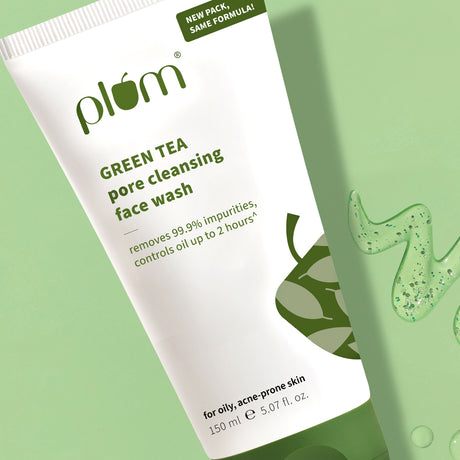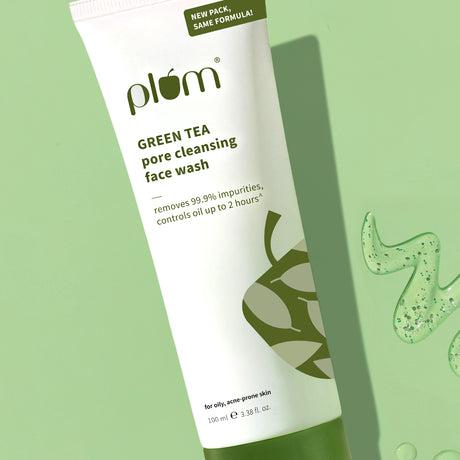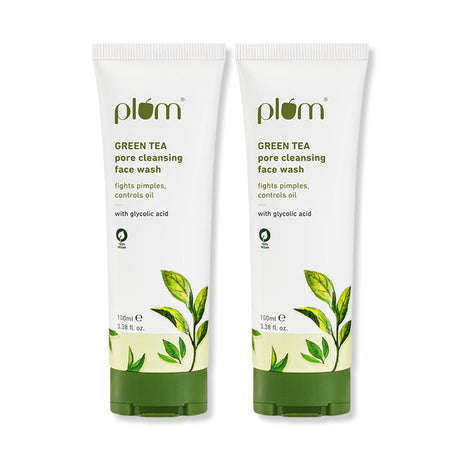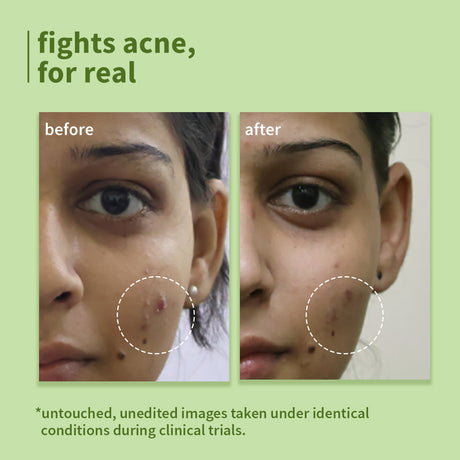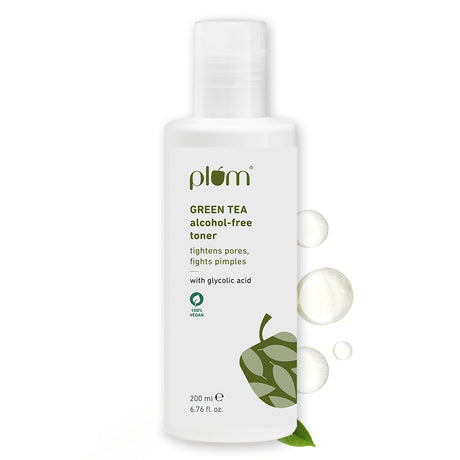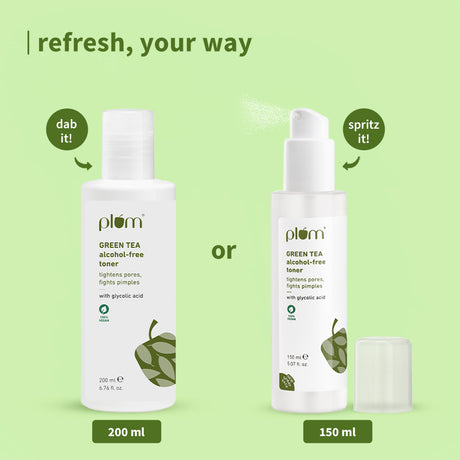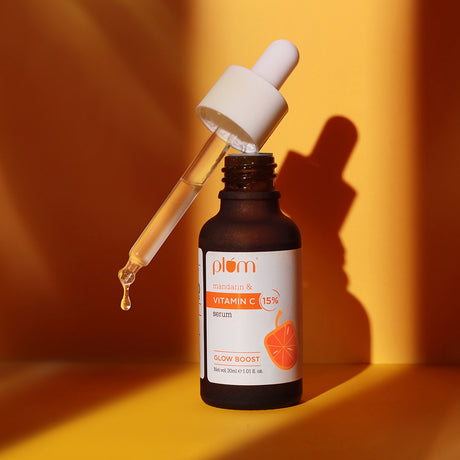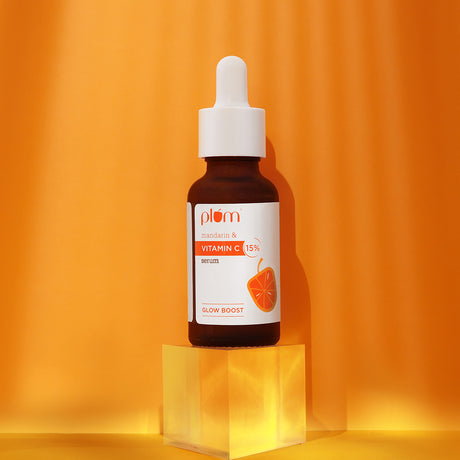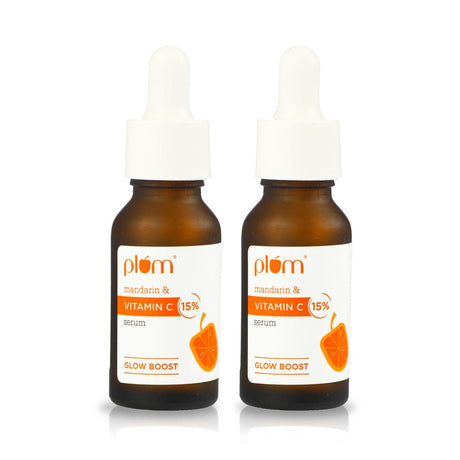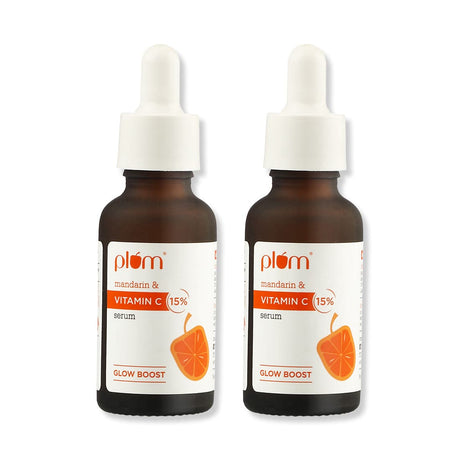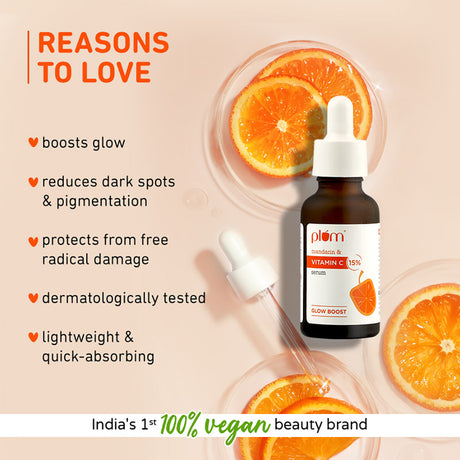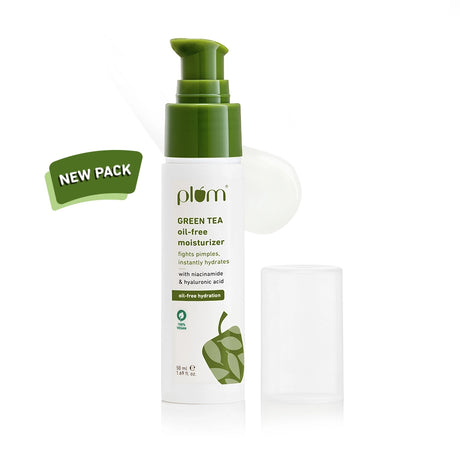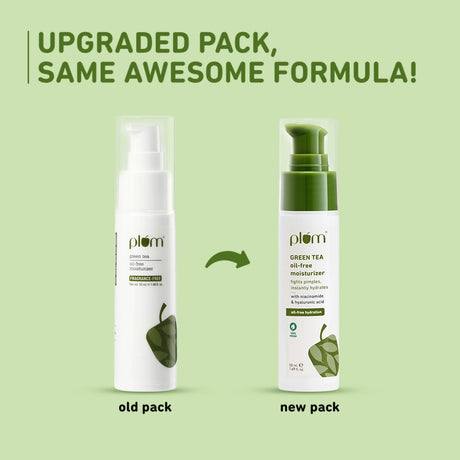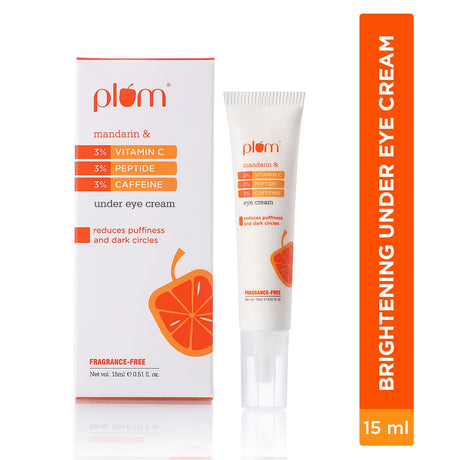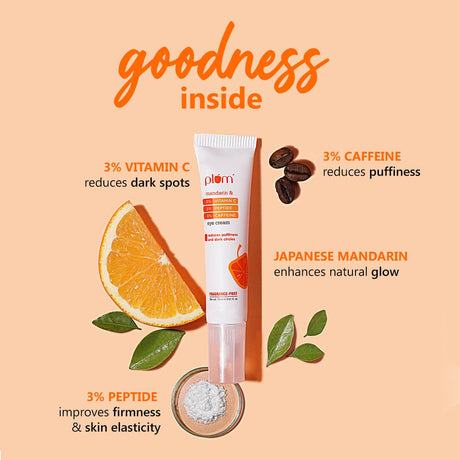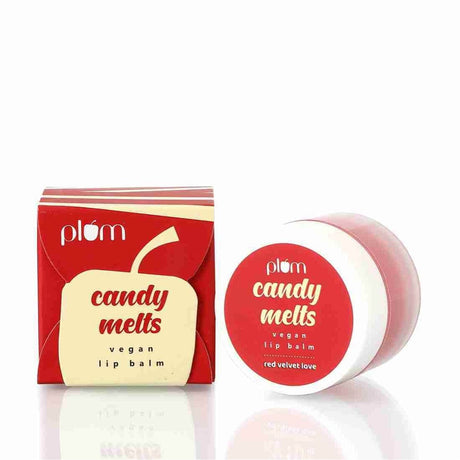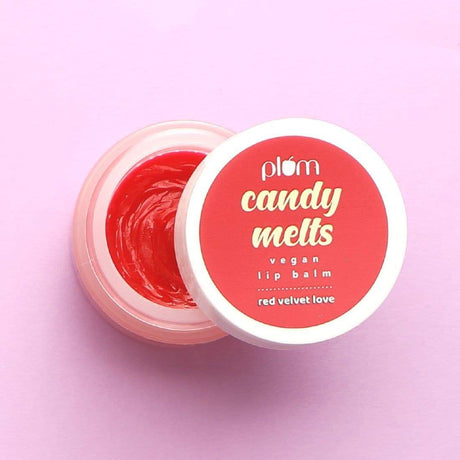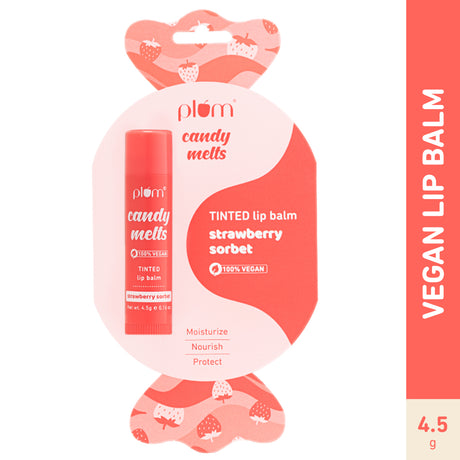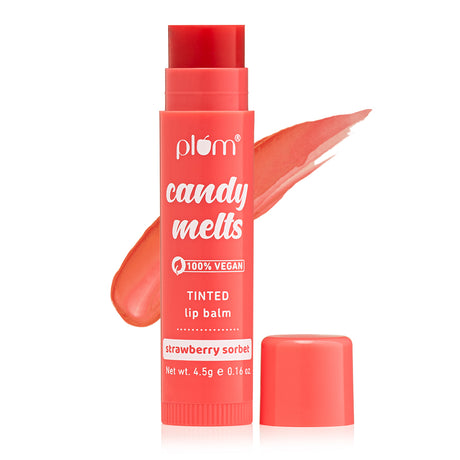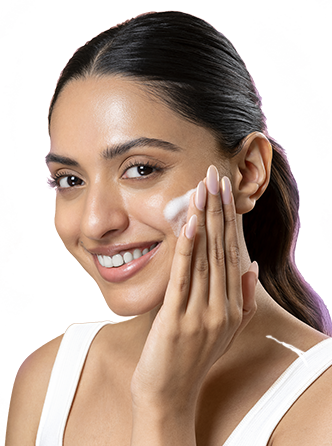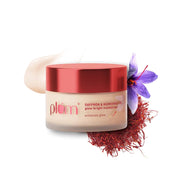
IN THIS ARTICLE
Winter is a harbinger of holidays and joy. You get to enjoy hot cocoa, fluffy blankets, and warm delicacies that elevate your mood and spirit.
However, when you look in the mirror, your skin narrates a different story. Winters can be very harsh on your skin, making it dry, rough, and tight. If you do not pay attention, it can lead to rashes, itchiness, redness, and dry patches.
Thankfully, to ensure that your skin remains soft and plump through the harsh winter winds, you only need the right winter skincare routine and some extra care.
So, stop looking for treatment for dry skin and every time there is a nip in the air, and bookmark this skincare routine for winter for a tailor-made guide.
But before we start, let’s understand how to identify your skin type.
How to identify your skin type?
Understanding how to identify your skin type is key to choosing the right products for your needs. Trust us, identifying your skin type is easier than it sounds. All you need is to listen to your skin.
There are two methods to do so-
1. Waiting method
Wash your face with a gentle cleanser and observe how your skin reacts after 25-30 min (do not apply anything).If it feels tight and dry, you have dry skin. Excessive shine and stickiness are indications of oily skin. If your skin feels dry and oily on the different parts of the face means you have combination skin. Moreover, if you have irritation and sensitivity in your skin, you probably have sensitive skin. And if it’s none of the above, it's normal skin.
2. Blotting method
Press a clean blotting paper against the different parts of your face and then observe the amount of oil on it against a light. If it has too much oil, you have oily skin. If there is no or little oil, your skin is dry. If the blotting paper is oily on the areas where you dabbed it against the T-zone and dry on the other parts, you have combination skin. It is best to do this test around midday or evening for the best results.
Now that you have identified your skin type, here is what you need to consider for your winter skincare routine.
Winter skin care routine steps for every skin type
Step 1: Cleanser
Your skincare routine should always start with a cleanser. For winter, you need cleansers that do not dry your skin out, but instead nourish while cleansing. Look for creamy face washes, if they suit your skin, and avoid scrubbing your skin harshly.
Gently massage the face cleanser on your skin for 60 seconds and wash off with lukewarm water. During winter, avoid washing your face frequently or for a long time.
Tips to choose cleansers for your skin type.
Oily skin and acne-prone skin
The best cleansers for oily skin are the ones that remove dirt and oil without irritating your skin. Especially during winter skincare, it's crucial to choose a face wash that balances your skin's moisture levels. Look for ingredients like green tea, salicylic acid, glycolic acid, and niacinamide that control sebum production and reduce acne.
Sensitive skin
Gentle face washes without abrasive materials like microbeads are best for sensitive skin. Look for hydrating and nourishing winter skin care ingredients that do not cause irritation or rashes on your skin like hyaluronic acid and lactic acid.
Dry skin
The best face washes for dry skin are ones that hydrate and clean your skin without stripping off the natural oils. For dry skin, it is important to use cream-based cleansers. Opt for ingredients like hyaluronic acid, azelaic acid, allantoin, glycerin, etc., while looking for the best face washes for your skin.
Combination skin
For combination skin, opt for a gentle winter skin care gel cleanser that gently removes the impurities while keeping your skin nourished.
Step 2: Toner
Contrary to what people believe, toning is a crucial step of a winter skin care routine, even in winter. Toner helps maintain the pH balance of your skin and minimizes pores. Irrespective of your skin type, ensure to use alcohol-free toners to avoid irritation. Spritz the toner on your face and let it air dry. Alternatively, you can pour a few drops of toner on a cotton pad and gently wipe your face with it.
Tips to choose toners for your skin type.
Oily and acne-prone skin
The best toners for oily skin are those that contain ingredients like astringent and green tea. Such toners work for combination skin as well.
Dry skin
Opt for toners that are rich in humectants like glycerin and hyaluronic acid to nourish your skin. If you have dry, mature skin, look for antioxidants and hydrating ingredients in your skincare for winter toners.
Sensitive skin
Natural and gentle toners infused with ingredients that soothe and calm your skin would be best for sensitive skin. Avoid AHA, and BHA in your toners and opt for those that contain rose water, witch hazel, and aloe vera.
Step 3: Serum
The third step for your winter skincare routine is serums. Serums are active ingredients in concentrated forms that penetrate the skin to work on your specific concerns.
However, as these are more potent than a moisturizer or cleanser, one must be careful while including them in your routine.
To use serums, drop a few drops on your face, apply it evenly, and dab it in. Let it absorb in completely before proceeding to your next step.
Always start with a lower concentration and then increase gradually as per the tolerance level of your skin. Moreover, while using serums, make sure to follow up with a broad-spectrum sunscreen, whether you are indoors or outdoors. While choosing skincare for winter serums you need to ensure that you consider your skin concern along with skin type.
Tips to choose face serums for your skin concern and type.
Pigmentation
You can treat pigmentation by following a dedicated skincare routine with actives. Vitamin C works best for pigmentation and is suitable for all skin types.
If you have pigmentation due to tanning or overexposure to the sun, you can also use Alpha Arbutin for the same.
Blemishes and dark spots
To brighten your skin and reduce blemishes, the Niacinamide serum works the best. It is suitable for all skin types and can remove acne marks too.
Acne
To treat acne, you need skin care in winter serums that unclog your pores, remove dead skin cells, and control sebum.
- Oily and acne-prone skin: look for serums that contain Salicylic Acid and Niacinamide.
- Normal skin: Niacinamide and Green Tea would work best for you.
- Dry skin: opt for Azelaic Acid as it won’t make your skin more dry or irritated.
Step 4: Moisturiser
While moisturization is important all through the year, it plays a huge role in keeping your skin healthy in winter.
Adequately hydrating your skin helps seal and retain the moisture.
A moisturizer also helps maintain your skin barrier, prevents moisture loss, and protects it against environmental aggressors. While looking at the best skin care for winter moisturizer, look for creamy and rich creams that nourish your skin, protecting it against harsh winter winds.
Oily skin and acne-prone skin
Contrary to what people believe, using a moisturizer is equally important for acne-prone and oily skin. Keeping your skin hydrated helps control sebum and reduce breakouts. However, you must stick to water or gel-based, lightweight moisturizers that nourish your skin without clogging your pores.
Sensitive skin
Harsh winters can be difficult for sensitive skin. Ensure to adequately hydrate it with moisturizers to prevent drying and flaking of the skin. While looking for skin care in winter face creams, look for ingredients such as ceramides and peptides that protect your skin barrier and retain moisture.
Normal skin
People with normal skin can opt for any type of moisturizer that suits their skin. Unless treatment for dry skin is your prime concern, you can choose moisturizers containing active ingredients like vitamin C, which will help reduce dark spots, or retinol, if you have mature skin.
Dry skin
Heavy, creamy skin care for winter moisturizers are the best winter moisturizers for dry skin. You can also opt for face oils, and thicker winter face creams to ensure that your skin is adequately moisturized all throughout the cold months.
Step 5: Sunscreen
Complete your routine for the day with a broad-spectrum sunscreen, be it summer or winter. Let us repeat it! Using sunscreen is a non-negotiable step of a skincare routine. Always follow your winter face cream with sunscreen. Look for a minimum SPF of 30 or more, and apply it on your skin at least 15-30 min before stepping out.
As per the thumb rule, you should use at least 2 finger lengths of sunscreen covering your ears, face, and neck. Gently massage it on your skin evenly until it is completely absorbed.
Step 6: Eye cream
For your night winter skin care routine, apply an eye cream, rich in humectants to nourish your undereye area. Use your ring finger and gently dab and massage the cream in your under-eye area.
Step 7: Lip balm
Lips get chapped quite easily in winter. While you must keep using a lip balm during the day, the night is the best time to ensure that your lips get enough hydration and you wake up with plump skin.
So here is a comprehensive skincare routine for winter that can help you get healthy nourished skin without stickiness or dullness. So enjoy the winter holidays with plump, healthy, and glowing skin!
FAQ
How to take care of your skin in winter naturally?
Ensure that you use skincare products according to your skin type, whatever be your skin type.
- Use warm water for showers and keep them short.
- Use humidifiers to keep your skin moisturized.
- Use a hydrating face mask and richer winter face creams.
- Drink plenty of water.
- Use hydrating serums for added hydration.
What is the best treatment for dry skin?
The best treatment for dry skin is adequate nourishment. Keep your skin hydrated both internally and externally. Moisturize your skin with a creamy, rich moisturizer, twice a day and avoid hot showers. Ensure that you cover your skin whenever you are exposed to cold winds and load up your skin with maximum nourishment in winter.
How do i change my winter skin care routine?
For the winter season, you need to switch to skincare products that nourish your skin and prevent dryness. Here are a few things you need to change in your routine for winter -
- Switch to milder, creamy cleansers that do not strip off the natural oils, and avoid washing your face with hot water.
- Use creamy and richer winter skincare moisturizers or body oils that deeply hydrate your skin.
- Indulge in a nourishing face mask once a week to replenish the moisture and dryness.
- For your routine, use ingredients like hyaluronic acid, ceramides, argan oil, niacinamide, etc.



